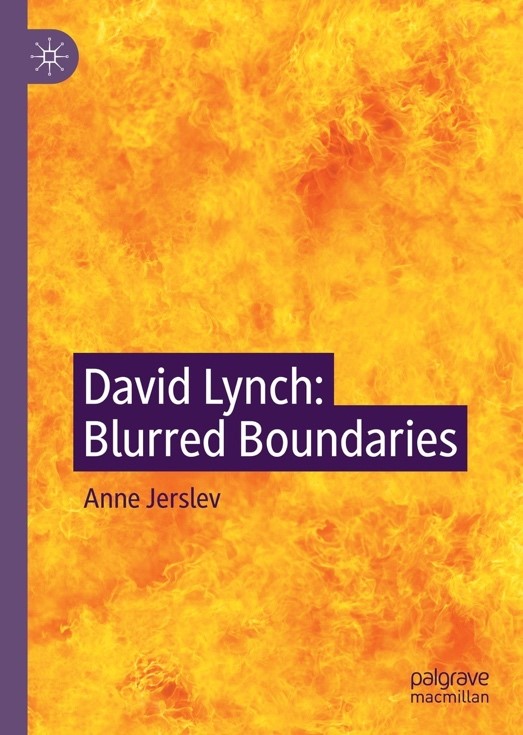Serious study of David Lynch’s film and television is not for the faint of heart. The banquet of images and sounds Lynch lays on for audiences stymies the limitations of our go-to tools, verbal language and rational discourse. Yet his allure keeps media scholars and critics storming those limits, wielding new perspectives. Anne Jerslev’s David Lynch: Blurred Boundaries takes a new approach that asks us to attend to Lynch’s overall oeuvre as an intermedial totality rather than a portfolio of individual works. Jerslev (pronounced Yerzlew) encourages us to see each of his works as an open bordered part of an inclusive umbrella oeuvre: “I think through Lynch’s total work as characterised by the blurring of boundaries between media, between paintings and moving images…between paintings and sculpture and film and sculpture, between photography and animation, between still and moving images, between exhibition and installation and even between biography and autobiography.”1 Her approach is not without its drawbacks for me. However, her comprehensive and detailed knowledge of the Lynchian canon, and her ability to link her vision of it to a wide range of contemporary critics and philosophers makes Blurred Boundaries an invigorating stimulus to thought about one of America’s most original and important artists.
Jerslev’s strongest support for her thesis is in Chapter 2 (the first chapter following the introduction), “The Air is on Fire,” about an exhibition that was sponsored by the Fondation Cartier in Paris (2007). The impact of the chapter comes mostly from her struggle to force words to recreate for her reader her experience of being inundated simultaneously by the works themselves and by an atmosphere created by the intermedial staging of a patchwork collection of Lynch’s paintings, sculpture, photographs, notes and drawings, short films, and a couple of installations of Lynchian rooms. Jerslev provides the look, sound, and feel of “the intermediality of this exhibit as an interaction between different media.”2 The enormous, hard backed companion to “The Air is on Fire,” published by Thames & Hudson has long been available as a catalogue of the contents of the exhibition; Jerslev adds the element of immediacy. She succeeds in making vivid for her readers what a boundless, nonverbal Lynchian oeuvre means to her and potentially to us, as she refers us to a wide range of theorists with whom she both agrees and disagrees, including Gernot Böhme and Mark Dorian.
Chapter 5 on Lynch and “visual noise” also scores many points for Jerslev’s larger claims. Through her observations on the intentional blurring of Lynch’s images and sound designs inside his works, notably his short films and his commercials, she buttresses her ideas about the porosity of the boundaries among his works. Jerslev’s definition of visual noise will resonate for readers familiar with Lynch’s films and Twin Peaks even if they haven’t seen the less familiar works she is talking about: “Visual noise is [a]… term that includes aesthetic abstractions, warped images and aesthetic renderings of the non-signifying in the form of blurring, distortion, disruption, layers of superimposition, and over-and underexposure.”3 My favorite of her insights is that this aesthetic makes possible representation of both characters and spaces that are, simultaneously, present and absent, and opaque and transparent, as well as banal and defamiliarized, particularly as she discusses Boat, a wonderful experimental short, and Lynch’s humorously pathos-filled, glitzy ad for Dior, “Lady Blue Shanghai.” She uses to great effect her thoughts on Lynch’s exciting representation of time in Boat through overexposure; she makes insightful comments on the way, in “Lady Blue Shanghai,” a Dior commercial for a handbag, Lynch creates mystery by depicting a couple that is both there and not there.
Jerslev displays much originality throughout Blurred Boundaries. Chapter 3 on the textures of aging in Lynch’s work testifies with freshness to the nonlinearity of Lynch’s vision of the marks of time on materiality. Chapter 4 on “Lynch and the Digital” provides new commentary on Lynch’s interest in the post-cinematic, with an emphasis on Inland Empire. Chapter 6 has unique take on Lynch’s works as a network bound by fragments, “in which any possible totality is lost from view.”4 She is less innovative in Chapter 7 when she contextualizes Lynch’s work using the Freudian concept of das Unheimliche (the uncanny). She adds little to existing Freudian perspectives on Lynch, and, like them, she does not explain satisfactorily the point of imposing Freud on an artist who has no interest in and little knowledge of him. (My discussions with Lynch suggest that the strangeness in the Lynchverse is inspired by the externality of the Kafkaesque and the nonlinearity of modern physics rather than the interiority of the Freudian Unheimliche.)
Although I liked taking a Lynchian voyage with Jerslev, I can’t say that she has convinced me to rethink my own commitment to the organic wholeness of each of Lynch’s individual feature films and the Twin Peaks series. But read Blurred Boundaries for those ideas too; you might agree with her, and she is marvelously detailed and passionate in making her case. In sum, I find my differences with Jerslev enjoyable and helpful in further clarifying for myself my own position. That’s one of the potential benefits of learned dialogue, isn’t it?


